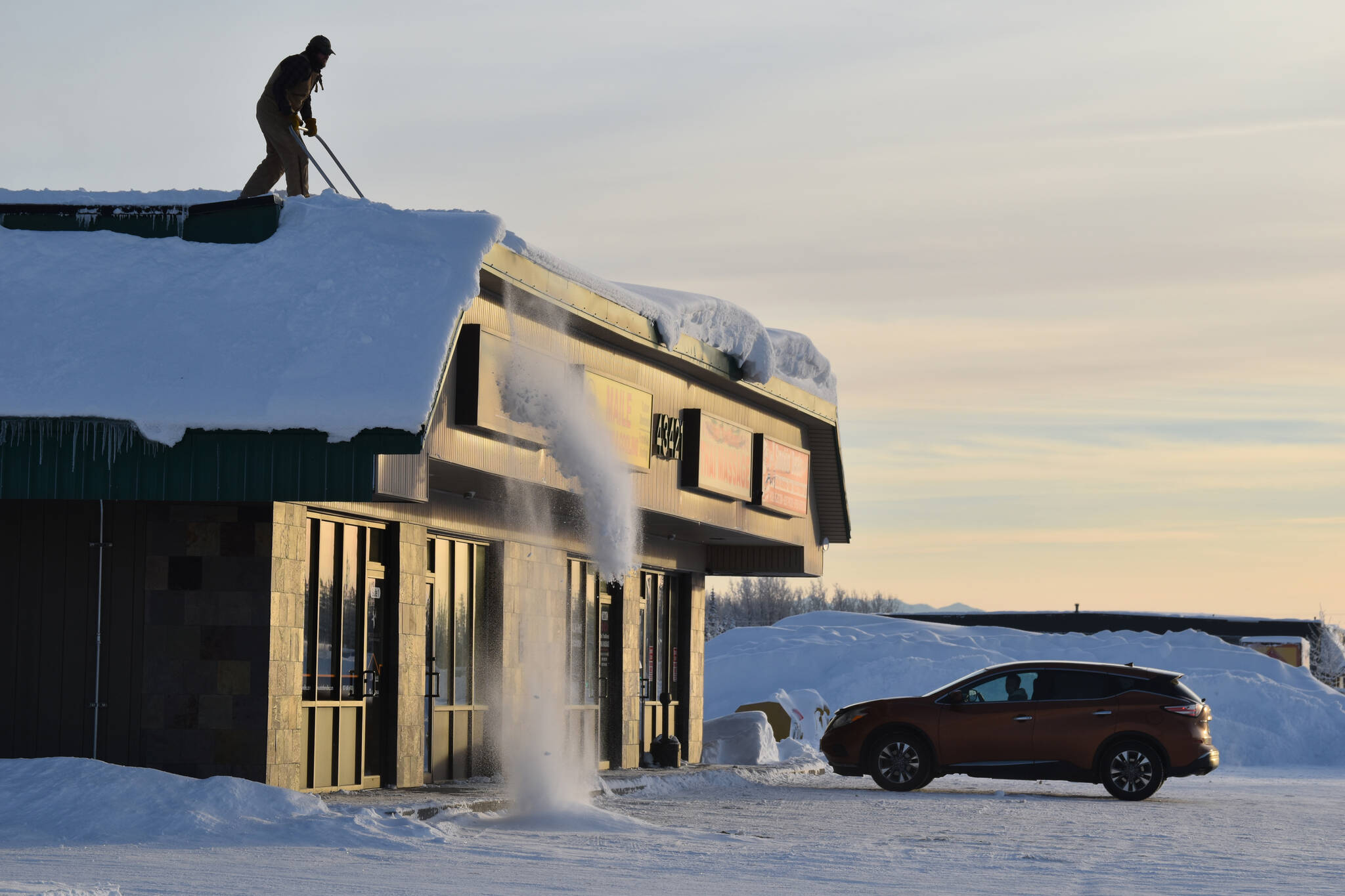The Kenai Peninsula has been hit with heavy snowfall this year, including several snowstorms that have left tall berms alongside roads and heavy snow on top of roofs. Kenai Fire Department Chief Tony Prior said Tuesday that the department has been getting calls from residents concerned that their roofs might collapse from the weight.
“It feels like a lot,” Prior said of the snow accumulation, which is several feet in areas of the peninsula.
Those fears are compounded by a string of reported building collapses this winter.
Along Kalifornsky Beach Road, both the Soldotna Spenard Builders Supply and the building that housed IDEA Homeschool and Frontier Community Resources collapsed on the same day in December.
Farther away in Anchorage, several buildings have collapsed. Anchorage Daily News reported Sunday that two buildings had collapsed this weekend. In February, another collapse left an occupant dead, according to The Associated Press.
Prior said that most local residents shouldn’t be too worried about their roofs.
He said that the weight of the snow accumulation around the central Kenai Peninsula is around 40 pounds per square foot. Any modern building, especially those built after 2006, is designed to handle around twice the weight, he said.
Modern structures, Prior explained, are rated for about 60 pounds per square foot just in the construction of the roof. An additional 10 pounds of bearing comes from the shingles and sheathing on the roof. Another 10 pounds of bearing comes from the “cord,” the beams that hold up the ceiling on the inside.
Buildings in other communities, including Homer and Cooper Landing, are by code designed to handle even heavier loads, he said.
While snow largely isn’t an issue, Prior said that drifting snow and snow that thaws and then refreezes can build up weight.
The buildings most likely to find themselves carrying more weight than they should are commercial buildings or buildings with flat roofs. Prior said that the slanted roofs of residential homes shed weight and would have a harder time getting heavy. If heat is being lost through the attic, especially, heavy ice can build up.
Older buildings, specifically those built around the 1970s, may only be rated for 40 pounds, Prior said.
For those concerned about the buildup on roofs, especially if they’re seeing specific areas with heavy drift buildup, Prior suggested shoveling — or hiring a contractor if there are health or safety concerns.
Some warning signs of an overstressed roof, according to a post by the department on Facebook, include sagging beams, doors and windows that can no longer be opened or closed, cracks in the walls, and creaking noises.
Prior said the department has been receiving calls about popping sounds in wood houses. Most of that noise he attributed to the expansion and contraction of wood as the temperature shifts.
“That usually just means we’re in a cold snap,” he said.
Another safety concern in a winter with this much snow is the obstruction of intake and exhaust vents on the exterior of houses, Prior said. He said these vents should be visible on the outside of the house, with the exhaust usually higher, the intake lower. If there’s no air intake, boilers can go into fault mode, shut down and stop outputting heat. More concerning, if the exhaust is covered, dangerous carbon monoxide can build up.
For more information from the department about the risks of heavy snowfall, visit facebook.com/KenaiFireDept.
Reach reporter Jake Dye at jacob.dye@peninsulaclarion.com.

